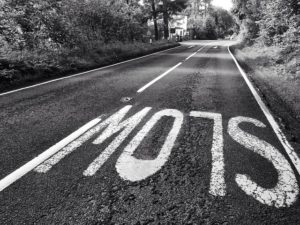
A comprehensive study found that poor road design was a factor in 22,000 motor vehicle accident fatalities from 2006 to 2009. Road design denotes the curvature of the street, the placement of polls, the road paint, bumpers, guards, and other features of a road. Poor road design is often overlooked as a contributing factor to car collisions. Correcting design issues is also one of the easiest ways to reduce car crash fatalities.
The Study: Overview and By the Numbers
The study was commissioned by the Transportation Construction Coalition which represents a collection of trade groups and unions who are involved in road construction. The study was conducted by the Pacific Institute for Research and Evaluation (“PIRE”). It covered an 18-month period utilizing data from the U.S. Consumer Safety Commission and the Department of Transportation and cross-referenced the data with insurance records and medical bills to piece together the costs associated with collisions and the factors that contribute to them. It evaluated the factors that contributed to car accidents (e.g. speeding, drinking, failure to use seatbelts, failure to signal, poor maintenance, and other common factors) and controlled for the road conditions present at the time of the accident.
According to the study, poor road design and conditions were a contributing factor in more than half of all fatal motor vehicle collisions in the United States. Poor road conditions contribute to fatality crashes that result in about $217.5 billion a year in costs. Comparatively, alcohol as a contributing factor in collisions cost a collective $130 billion a year, speeding was responsible for $97 billion, and failure to wear a seatbelt cost $60 billion a year.
Poor Road Conditions: Type and Location
Highways represented the height of modern road design. However, the majority of America’s back roads were designed and constructed when horses and buggies were the dominant forms of travel. These under-developed roads are responsible for a substantial number of fatalities in part due to their poor design and also because they are relatively remote and thus far from medical aid.
A hallmark of an older road is that it twists and turns with the contours of the load whereas modern roads are constructed through hills to keep them straight. Additionally, these older roads are harder to maintain, more expensive, and more remote which combines into a deadly combination of insufficient funding and decades of deferred maintenance. Similarly, many of these roads lack sidewalks, guardrails, and other characteristics of modern roads which increase the likelihood of collisions with other vehicles and pedestrians.
While highways may seem like the dominant form of travel, the study’s authors point out that the highway system accounts for just 45,000 miles of road out of the country’s 3.9 million road miles. The researchers emphasized that back roads, rural roadways, and older streets represent a disproportionate amount of the United States’ millions of miles of road which contributes to the substantial number of fatal collisions.
Another common problem is bridges. Older bridges were narrow and designed for infrequent use. With limited clearance, these bridges are insufficient for modern cars, making them dangerous to operate on and increasing the likelihood of a fatal accident.
Poor Road Conditions: Create the Environment for Collisions
Modern road technology is seamlessly integrated into roads. With everything from rumble strips that warn drivers who drift off of the road to shoulders that give drivers emergency pull-off areas, these technologies all combine to increase visibility and navigability and reduce collisions. Many older roads do not feature these technologies. They often lack shoulders, painted lane-lines, intuitively designed roads that are easy to predict, and signs that are legible in a variety of circumstances.
Because many drivers are unaccustomed to them, poor road design conditions often surprise drivers. Startled drivers often make mistakes. And on these rural roads mistakes can be fatal because help could be hours away.
Recommend Solutions for Risky Roads
The authors of the study recommend a comprehensive review of America’s roads to identify areas with the greatest need. Moreover, the study recommends that:
- Narrow roads be widened to comply with modern standards;
- Older roads be equipped with shoulders;
- Old bridges be shut down, replaced or widened;
- Signposts be installed;
- Streetlights be installed;
- Crooked roads be aligned;
- Brighter and more reflective paint be used;
- Rumble strips are added; and
- Older roads are equipped with guardrails.
In essence, the authors recommend that these older roads be upgraded with modern road technologies that increase the navigability of the road, increase visibility and incorporate modern alert and arresting technologies to prevent accidents. The study noted that the primary impediment to implementing these solutions is cost. It will cost the government billions to upgrade the back roads.



